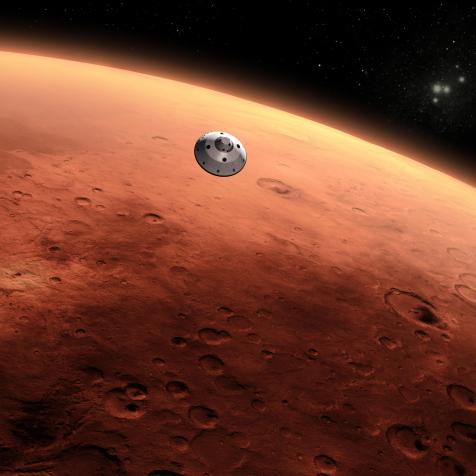
Guardiano5
Will Sending Aliens Nudes Lure Them to Us? NASA Thinks so.
NASA scientists want to send naked pictures of humans to space in hopes of potentially making contact with aliens.
The message will also come with an invitation to respond, should aliens ever discover it. The pictures aren’t graphic, but rather illustrations of a naked man and woman with DNA descriptions.
To make the unclad humans more inviting, the man and woman are waving in the picture.
NASA revealed the image in a study that’s part of “Beacon in the Galaxy,” (BITG) the latest in a string of attempts to reach other intelligent life.

Jonathan H. Jiang, Hanjie Li, Matthew Chong, Qitian Jin, Philip E. Rosen, Xiaoming Jiang, Kristen A. Fahy, Stuart F. Taylor, Zhihui Kong, Jamilah Hah, Zonghong Zhu
Pictural representation of humans and double helix from the proposal document.
This isn’t the first time naked depictions of humans have been sent to space. The Pioneer plaques sent to space on the 1972 Pioneer 10 and 1973 Pioneer 11 missions also featured illustrations of a stripped-down man and woman.
“The proposed message includes basic mathematical and physical concepts to establish a universal means of communication followed by information on the biochemical composition of life on Earth, the Solar System’s time-stamped position in the Milky Way relative to known globular clusters, as well as digitized depictions of the Solar System, and Earth’s surface,” says the study, devised by Jonathan Jiang.
BITG’s message is written in binary code, which the scientists believe is the closest thing to a universal language. Should the message be sent into space, it will be transmitted from the 500-meter Aperture Spherical Radio Telescope in China and the SETI Institute’s Allen Telescope Array in Northern California.

Jeff Dai/Stocktrek Images
The Five-hundred-meter Aperture Spherical Telescope (FAST) where the message to extraterrestrials could be beamed into space.
Perhaps most controversially, the message will include information about the location of the Earth. Some experts worry this will be seen as an invitation for a potentially-hostile alien species to damage our home planet.
“Logic suggests a species which has reached sufficient complexity to achieve communication through the cosmos would also very likely have attained high levels of cooperation amongst themselves and thus will know the importance of peace and collaboration,” said the team.















